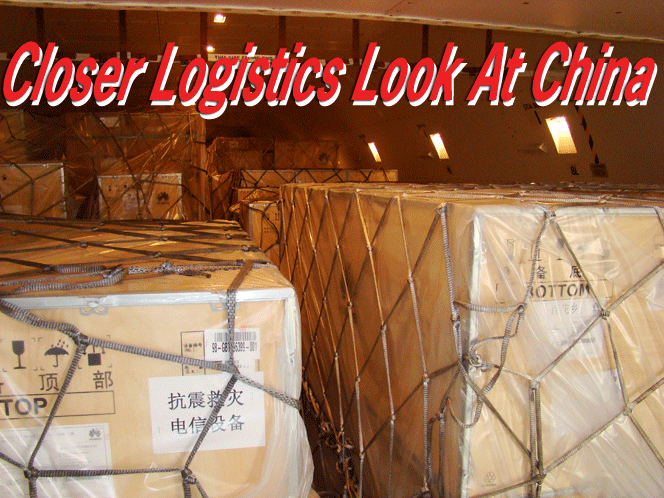
 As
the financial crisis impacts China, the country’s logistics industry
is being reshaped by three major dynamics. While many companies hope
to just weather this storm, others will seize the opportunity to leapfrog
competition and reposition for long-term success. As
the financial crisis impacts China, the country’s logistics industry
is being reshaped by three major dynamics. While many companies hope
to just weather this storm, others will seize the opportunity to leapfrog
competition and reposition for long-term success.
 Dynamic 1: continued downward pressure on demand coupled with shifting
mix call for assessment of service offerings.
Dynamic 1: continued downward pressure on demand coupled with shifting
mix call for assessment of service offerings.
Declining international and domestic trade
have created downward pressure on demand for logistics services. Along
with decreasing international trade, domestic cargo volume growth has
also been declining across the different modes of transportation, including
rail, waterway, road and air.
However, logistics companies can offer
customized and potentially higher margin offerings when they are attuned
to and adjust for changing customer demands, such as:
•
Export growth opportunities are still strong in select top 25
lanes where trade has been less impacted by the crisis
•
Domestically, government policy and manufacturing companies are
driving the shift of manufacturing bases inland and consequently accelerating
inland demand for logistics
•
Companies are restructuring their supply chains and directly impacting
requirements for logistics services, as they opt for flexibility and
scalability on top of cost.
•
Increased need for more high value-added and specialized logistics
services due to industry upgrades in coastal cities.
 Dynamic
2: declining profits compounded by more volatility require aggressive
cost restructuring. Dynamic
2: declining profits compounded by more volatility require aggressive
cost restructuring.
Since Q4 2008, prices have continued to drop across almost all sub-sectors
of China’s logistics industry due to overcapacity resulting from
the economic downturn. In addition, operational complexity, a changing
legal environment, and a new competitive paradigm are complicating cost
drivers and structures.
For example, the recently launched “Fuel
Price Reform Policy” calls for the retail fuel price in China
to be tied more closely to the global market, increasing volatility
in an industry of tight margins. If the crude oil price increases by
20 percent, the margin of a typical road transportation business will
be reduced from 3 to 0 percent, as it becomes more difficult to pass
fuel cost increases to customers in this over capacity market.
For a company’s short-term survival
and longer-term competitiveness, bold and sweeping cost optimization
actions are critical, such as:
•
Linehaul – network optimization, routing improvements, fleet
management
•
Labor – process and activity, optimization, workforce management,
capacity adjustment.
•
Operations – outsourcing of fixed assets, consolidation,
and achieving economies of scale.
 Dynamic
3: renewed investment interest signals further industry consolidation. Dynamic
3: renewed investment interest signals further industry consolidation.
Despite the effect current market conditions have on China’s short-term
growth, China is expected to rebound and continue to develop as one
of the major global manufacturing bases. Logistics companies with relatively
strong financial positions are already expanding their capabilities
by pursuing mergers and acquisitions (M&A). M&A activity is
stimulated because of:
•
Market demand for expanded capabilities and network
•
Targets supporting companies’ longer-term growth strategies
are becoming available at attractive prices, driven by low valuation
•
The government of China’s legal and financial support for
consolidation in the logistics industry
One should anticipate M&A activity
to ramp up quickly and significantly change the competitive landscape.
As these three dynamics reshape the logistics
industry and alter the competing paradigm, companies need to be proactive
with cost re-structuring, competitive positioning, and a long-term growth
and investment strategy. Logistics companies have several strategic
options depending on their desire for growth, financial positioning,
and risk appetite – defend, rebuild, and/or attack.
Gordon Feller
|




